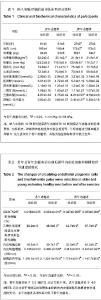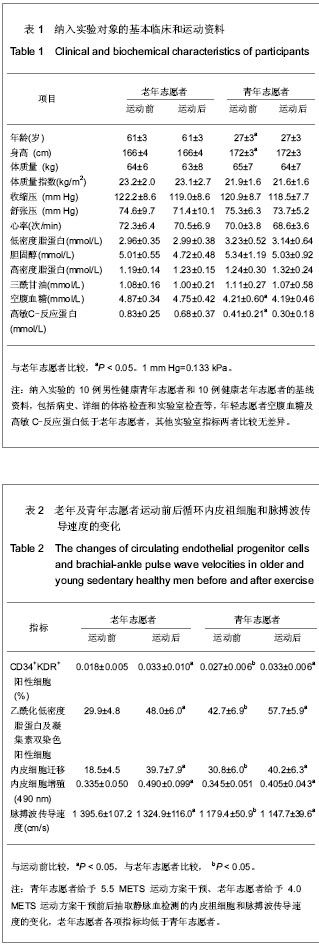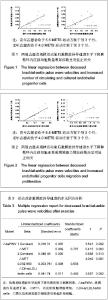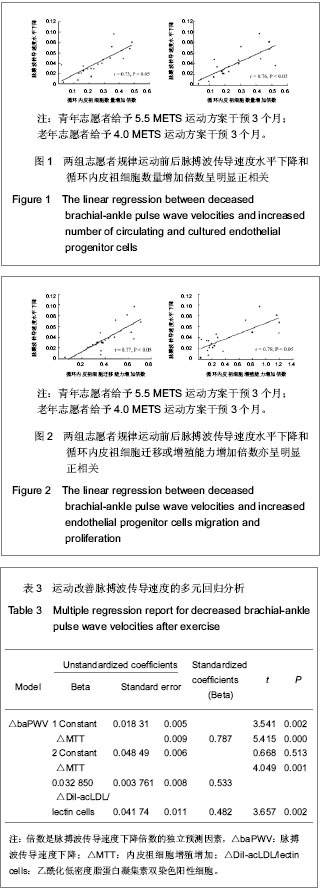| [1] Kumar AH, Caplice NM. Clinical potential of adult vascular progenitor cells. Arterioscler Thromb Vasc Biol.2010;30(6): 1080-1087. [2] Tao Jun, Wang Yan, Yang Zhen, et al. Circulating endothelial progenitor cell deficiency contributes to impaired arterial elasticity in persons of advancing age. J Hum Hypertens. 2006;20(7): 490–495. [3] Yang Z, Chen L, Su C, et al. Impaired endothelial progenitor cell activity is associated with reduced arterial elasticity in patients with essential hypertension. Clin Exp Hypertens.2010; 32(7):444-452. [4] Yang Z, Lai GH, Xia WH, et al. Zhongguo Zuzhi Gongcheng Yanjiu yu Linchuang Kangfu. 2012;16(10):1871-1874.杨震,赖光华,夏文豪,等.流体切应力与内皮祖细胞铜锌超氧化物歧化酶基因表达及活性[J].中国组织工程研究与临床康复,2012, 16(10):1871-1874.[5] Yang Z, Xia WH, Zhang YY, et al. Shear stress-induced activation of Tie2-dependent signaling pathway enhances in vivo reendothelialization capacity of human endothelial progenitor cells. J Mol Cell Cardiol.2012;52(5):1155-1163. [6] Yang Z, Wang JM, Chen L, et al. Acute exercise-induced nitric oxide production contributes to upregulation of circulating endothelial progenitor cells in healthy subjects. J Hum Hypertens. 2007; 21(6):452-460. [7] Sabine S, Alexander, N, Sophie Z, et al. Endurance training increases the number of endothelial progenitor cells in patients with cardiovascular risk and coronary artery disease. Atherosclerosis. 2005; 181(2): 305-310. [8] Gerald FF, Balady GJ, Amsterdam EA, et al. Exercise Standards for Testing and Training-A Statement for Healthcare Professionals From the American Heart Association. Circulation. 2001;104(14) :1694-1740.[9] Yang Z, Tao J, Tu C, et al. Shear stress contributes to t-PA mRNA expression in human endothelial progenitor cells and nonthrombogenic potential of small diameter artificial vessels. Biophysic Biochem Res Commun.2006;342(2):577-584. [10] Yang Z, Wang JM, Wang LC, et al. In vitro shear stress modulates antithrombogenic potentials of human endothelial progenitor cells. J Thromb Thrombolysis. 2007;23(2): 121-127. [11] Tao J, Yang Z, Wan JM, et al. Effects of fluid shear stress on eNOS mRNA expression and NO production in human endothelial progenitor cells. Cardiology. 2006;106(2): 82-88. [12] Yang Z, Xia WH, Luo CF, et al. Zhongshan Daxue Xuebao (Yixue Kexueban). 2012;33(1):54-59.杨震,夏文豪,罗初凡,等.高血压循环内皮祖细胞变化和动脉弹性的关系[J].中山大学学报:医学科学版,2012,33(1):54-59.[13] O'Rourke MF, Nichols WW. Aortic diameter, aortic stiffness, and wave reflection increase with age and isolated systolic hypertension. Hypertension. 2005;45(4):652-658. [14] Kojdab G, Hambrecht R. Molecular mechanisms of vascular adaptations to exercise. Physical activity as an effective antioxidant therapy? Cardiovas Res. 2005;67(2):187-197. [15] Xie W, Parker JL, Heaps CL. Effect of exercise training on nitric oxide and superoxide/HO signaling pathways in collateral-dependent porcine coronary arterioles. J Appl Physiol. 2012;112(9):1546-1555. [16] Ciolac EG. High-intensity interval training and hypertension: maximizing the benefits of exercise? Am J Cardiovasc Dis. 2012;2(2):102-110. [17] Thanassoulis G, Lyass A, Benjamin EJ, et al. Relations of exercise blood pressure response to cardiovascular risk factors and vascular function in the framingham heart study. Circulation. 2012;125(23):2836-2843.[18] Kröller-Schön S, Jansen T, Hauptmann F, et al. α1AMP-Activated Protein Kinase Mediates Vascular Protective Effects of Exercise.Arterioscler Thromb Vasc Biol. 2012;32(7):1632-1641. [19] Shah A, Oh YB, Lee SH, et al. Angiotensin-(1-7) attenuates hypertension in exercise-trained renal hypertensive rats. Am J Physiol Heart Circ Physiol. 2012;302(11):H2372-2380. [20] Mbius-Winkler S, Hilberg T, Menzel K, et al. Time-dependent mobilization of circulating progenitor cells during strenuous exercise in healthy individuals. J Appl Physiol. 2009;107(6): 1943-1950. |



